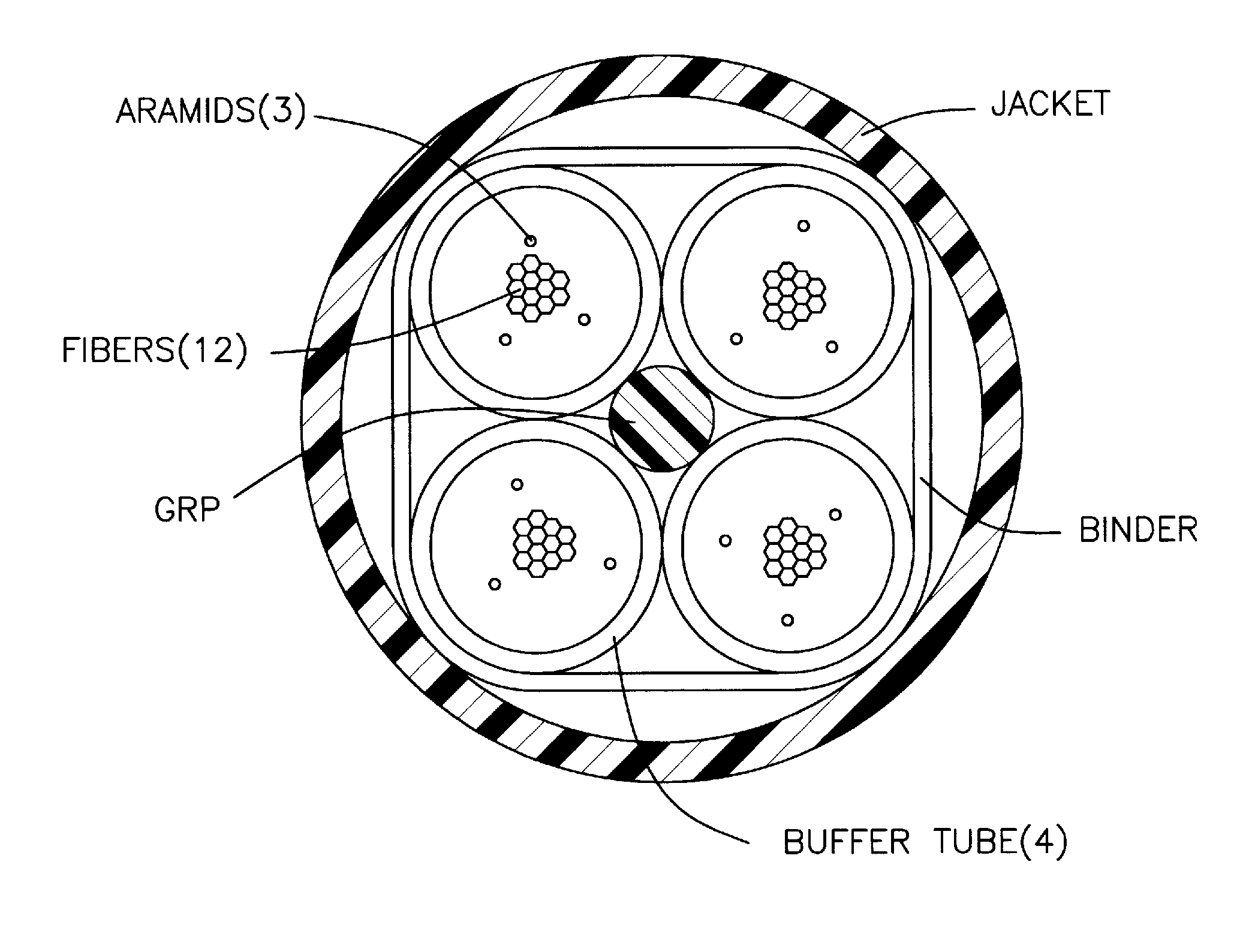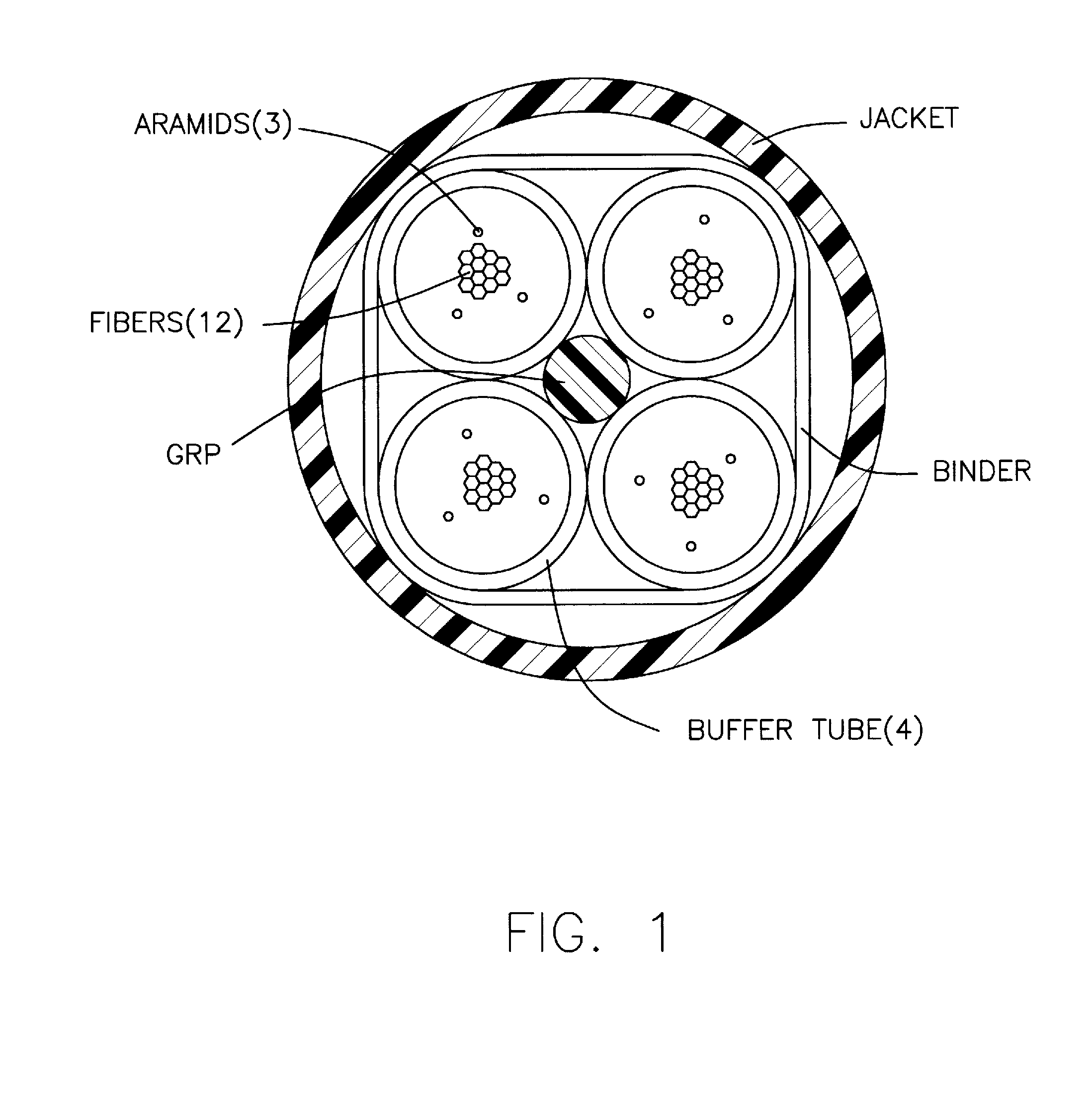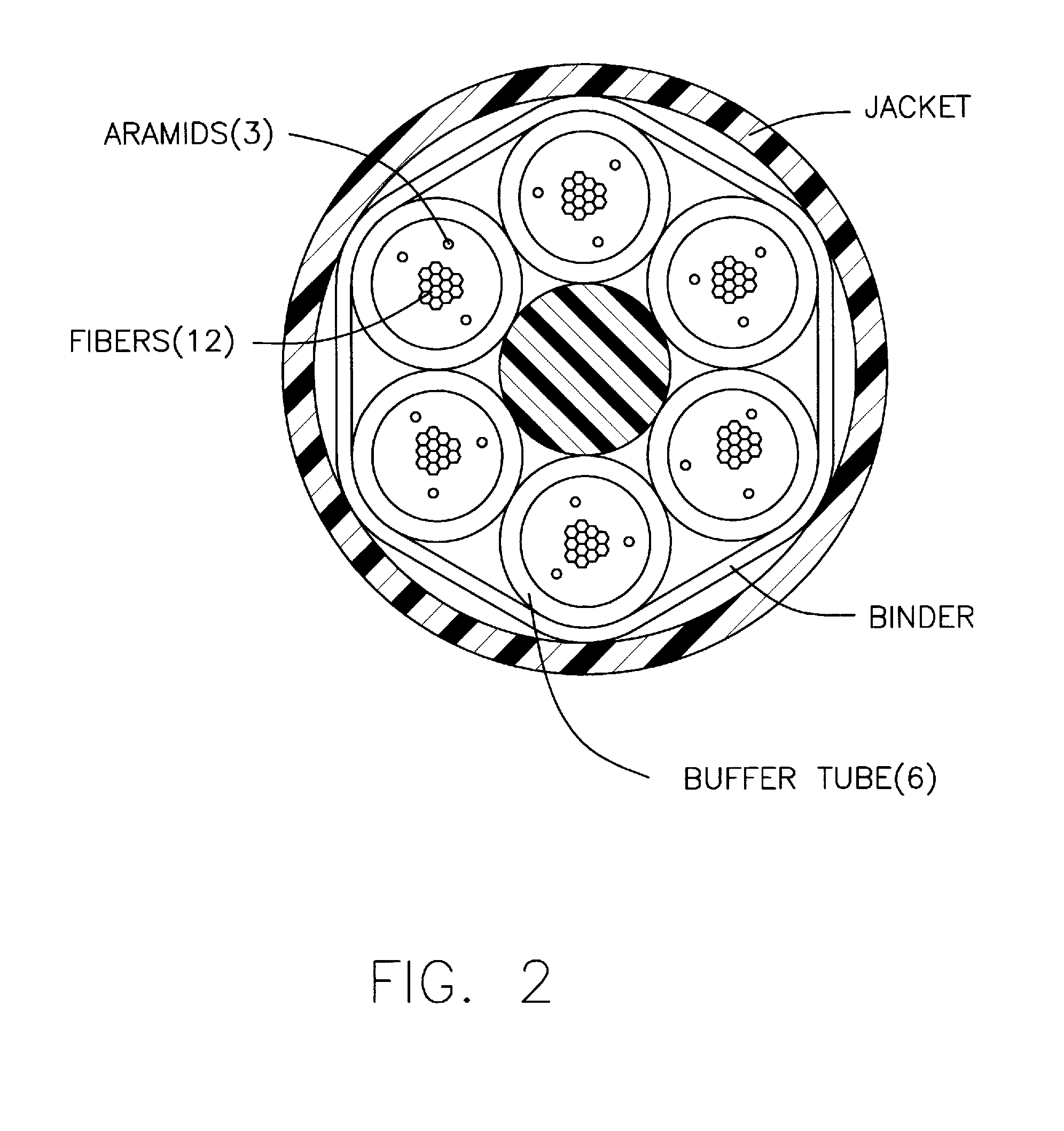Fiber optic cable with improved low temperature and compression resistance
a fiber optic cable and compression resistance technology, applied in the field of communication cables, can solve the problems of limiting the free space in the tube, the failure of the cable eventually, and the increase of the situation, so as to achieve the effect of improving the cold temperature resistan
- Summary
- Abstract
- Description
- Claims
- Application Information
AI Technical Summary
Benefits of technology
Problems solved by technology
Method used
Image
Examples
Embodiment Construction
[0019]In one embodiment of the present arrangement shown in FIG. 3, a fiber optic cable 10 is shown for containing thirty six (36) fibers. Cable 10 includes an outer jacket 12 and three (3) buffer tubes 14 therein. Buffer tubes 14 are preferably constructed of FRPVC (Flame Resistant Polyvinylchloride), and jacket 12 is made from either PVDF (Polyvinylidene Fluoride) or FRPVC. It is noted that the invention is not limited in this respect and the features described herein for cable 10 may be used in cable construction using other polymers for jacket 12 and tubes 14 as desired.
[0020]Regarding the polymer used for jacket 12, PVDF provides very good smoke and fire resistance properties and also provide good crush resistance properties and cold temperature brittleness resistance. However, PVDF is expensive and does tend to have a higher coefficient of linear expansion / contraction meaning that in cold temperatures the PVDF jacket may shrink significantly (even more so than the FRPVC tubes)...
PUM
 Login to View More
Login to View More Abstract
Description
Claims
Application Information
 Login to View More
Login to View More - R&D
- Intellectual Property
- Life Sciences
- Materials
- Tech Scout
- Unparalleled Data Quality
- Higher Quality Content
- 60% Fewer Hallucinations
Browse by: Latest US Patents, China's latest patents, Technical Efficacy Thesaurus, Application Domain, Technology Topic, Popular Technical Reports.
© 2025 PatSnap. All rights reserved.Legal|Privacy policy|Modern Slavery Act Transparency Statement|Sitemap|About US| Contact US: help@patsnap.com



